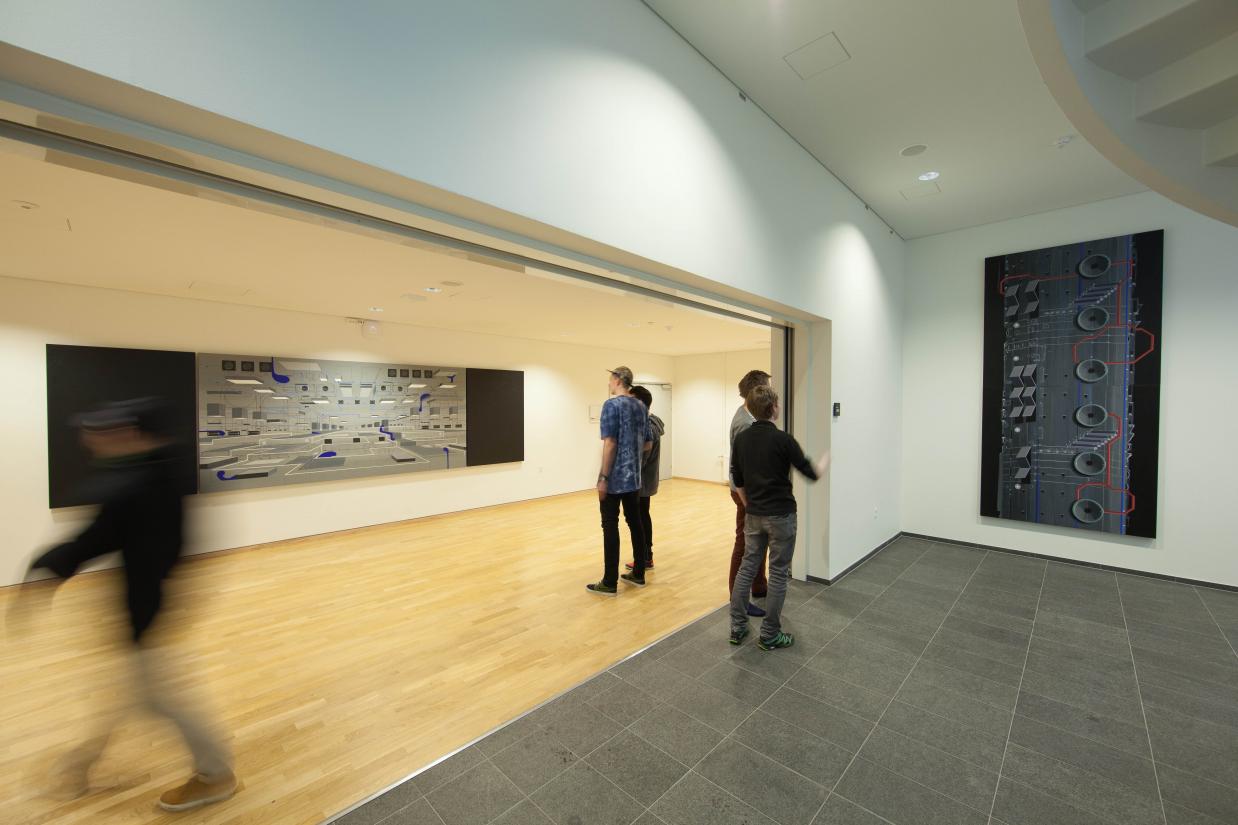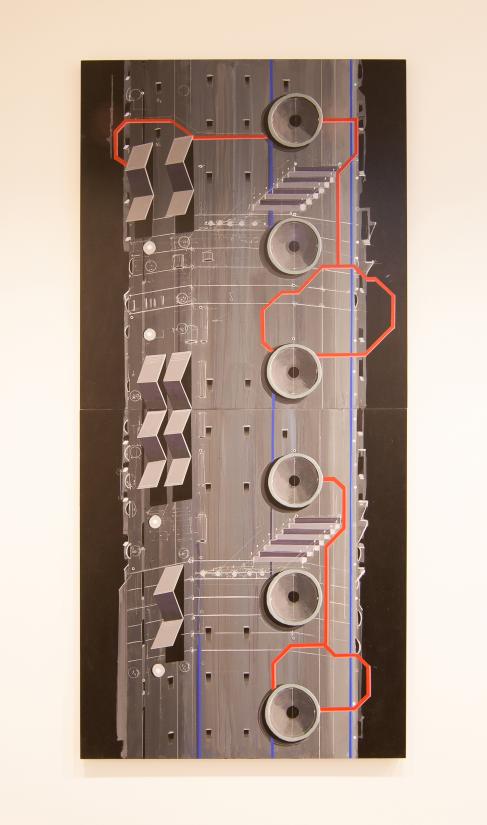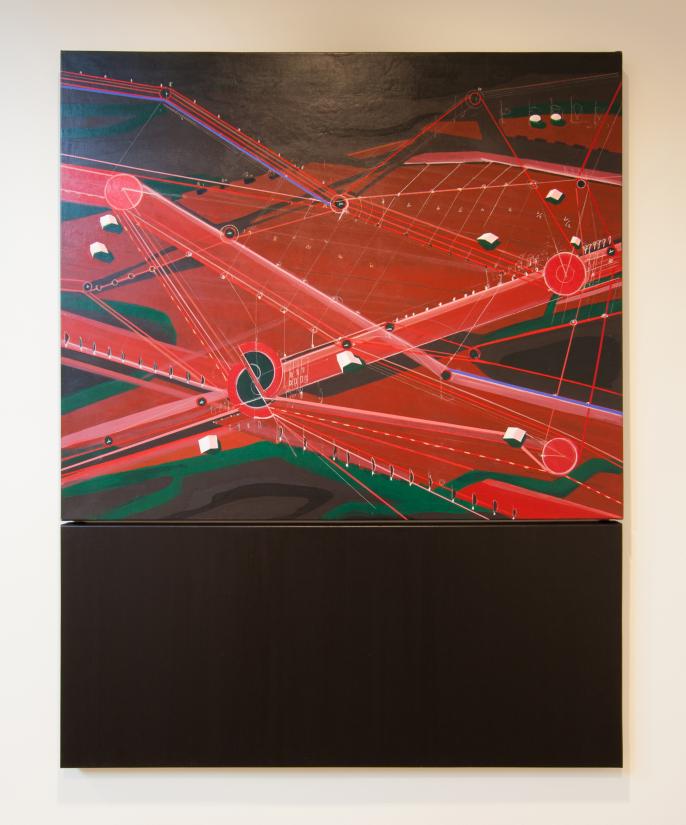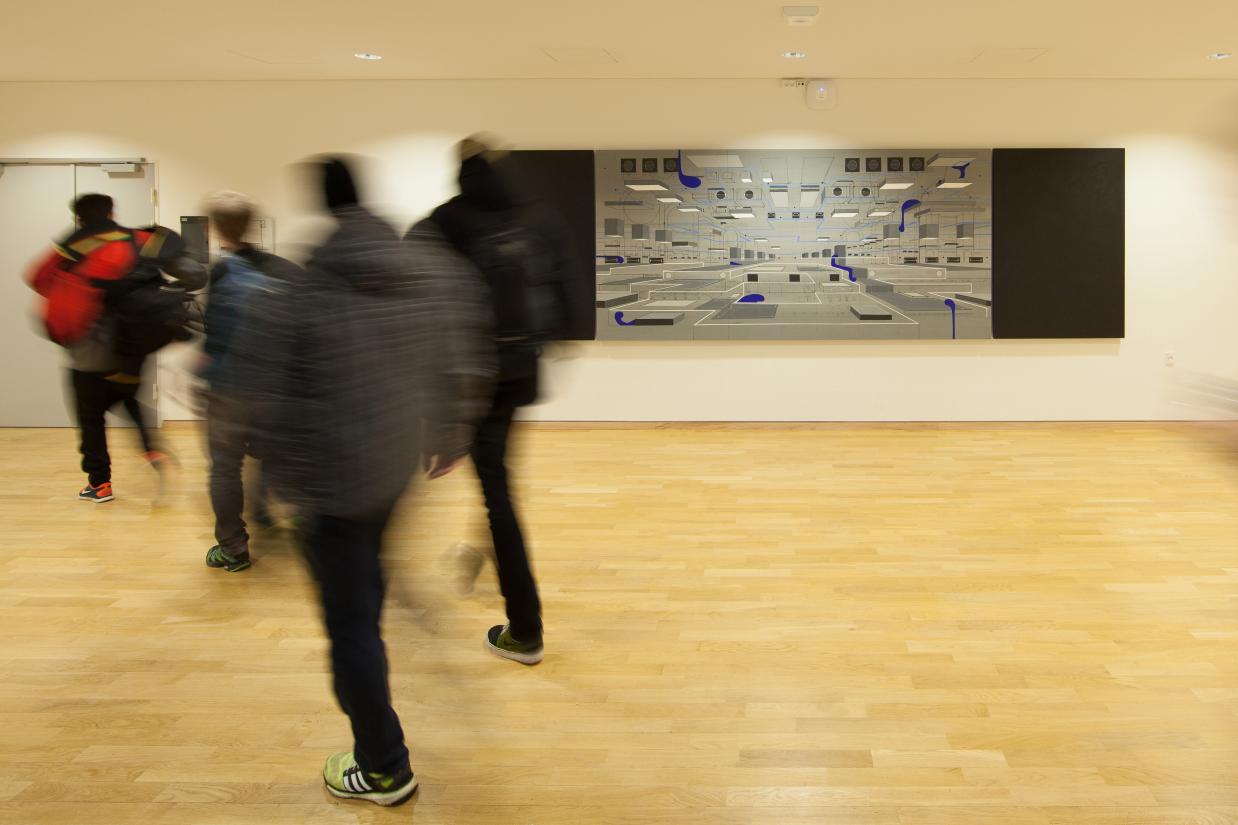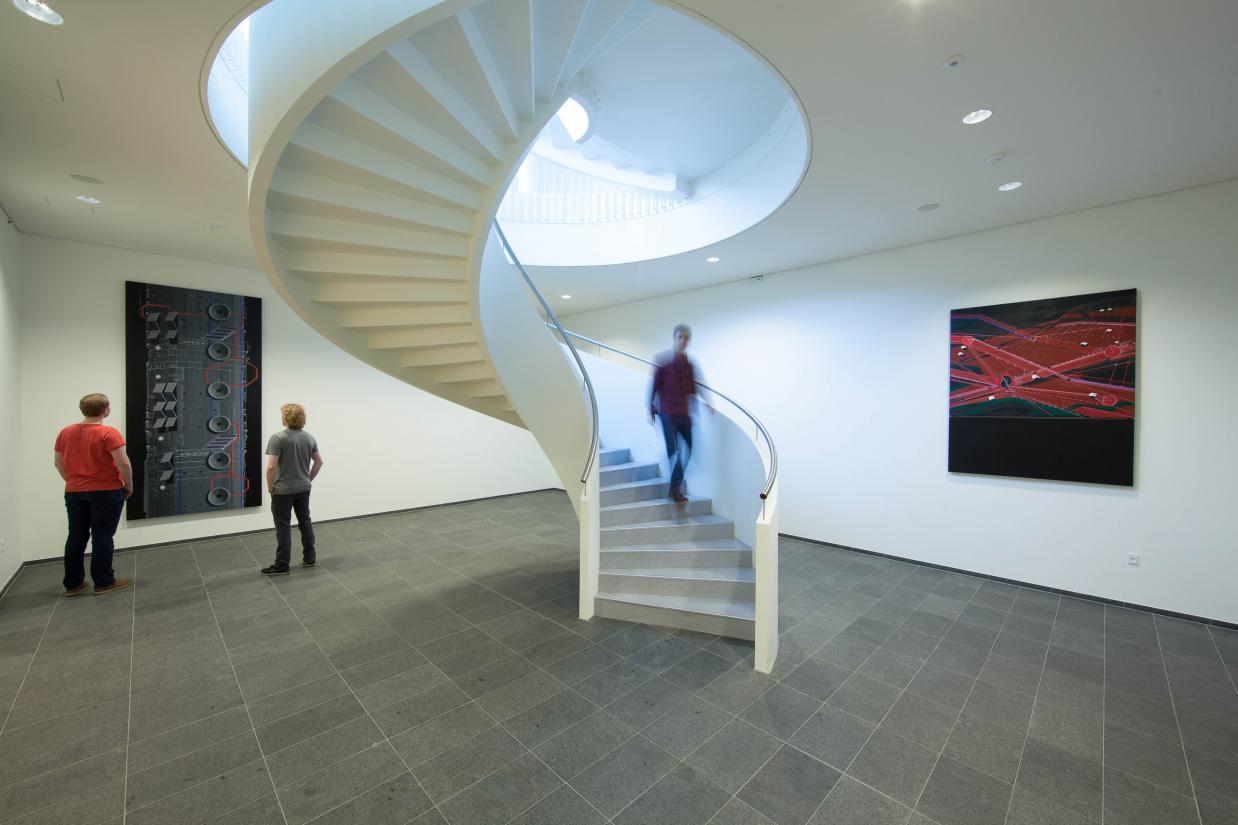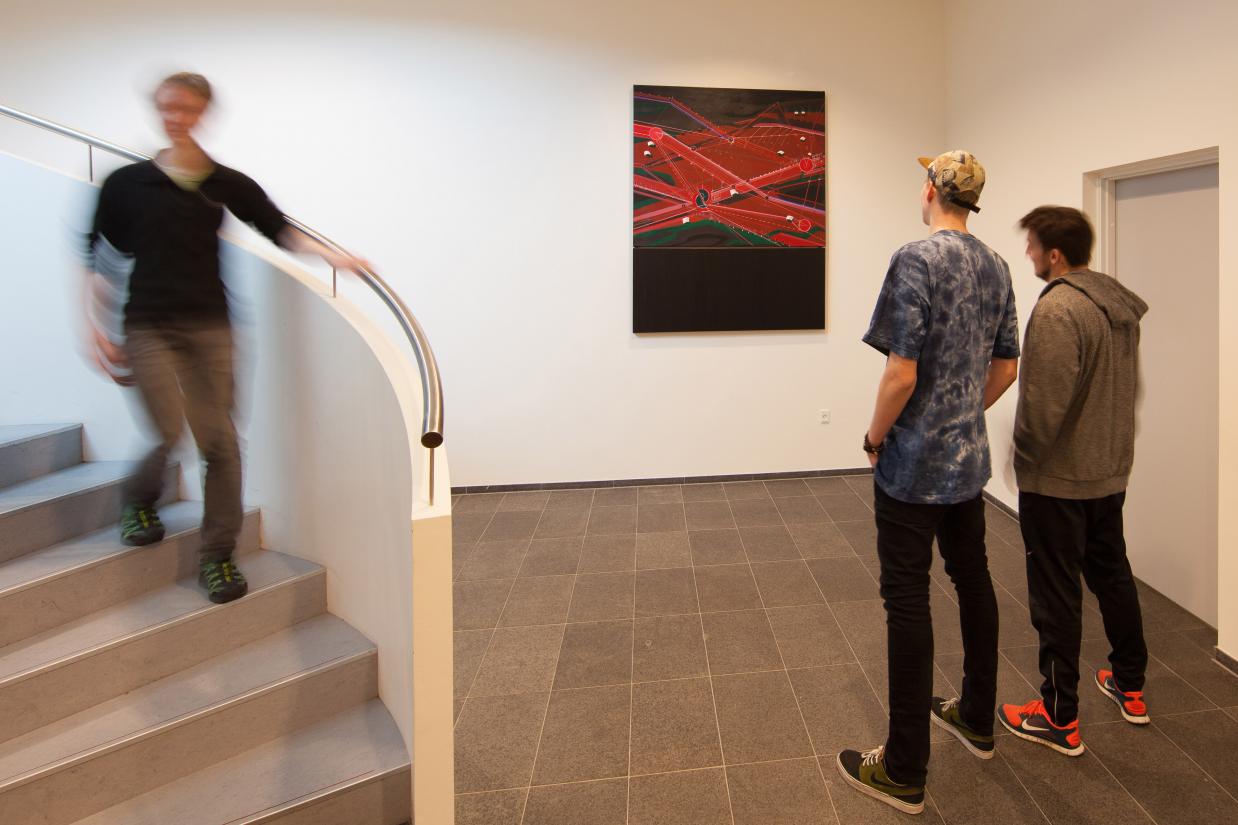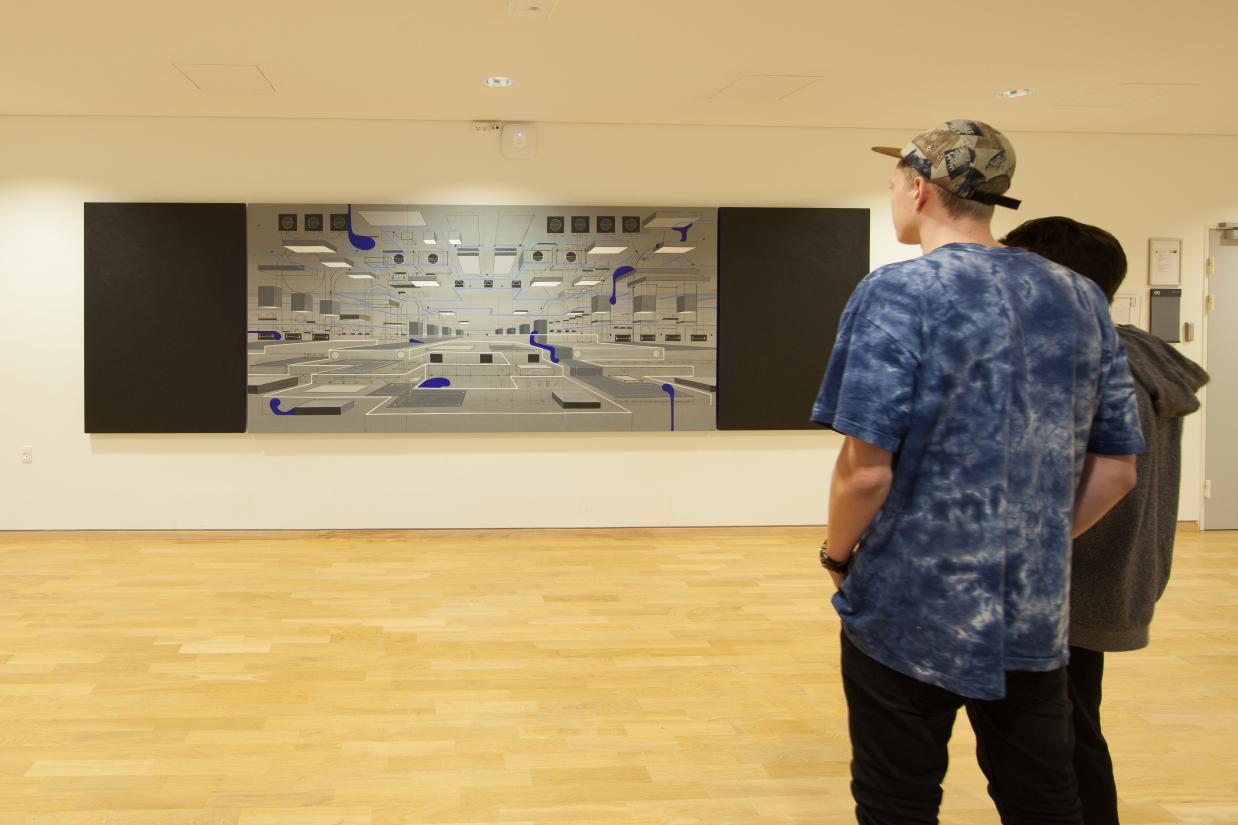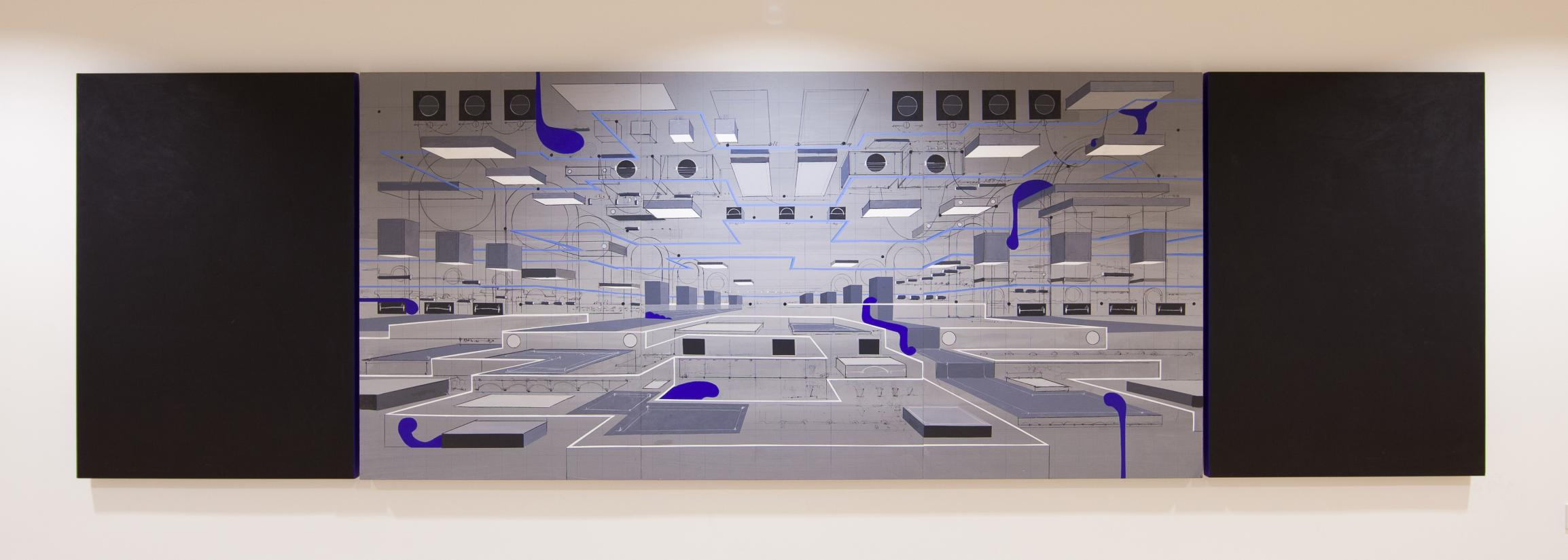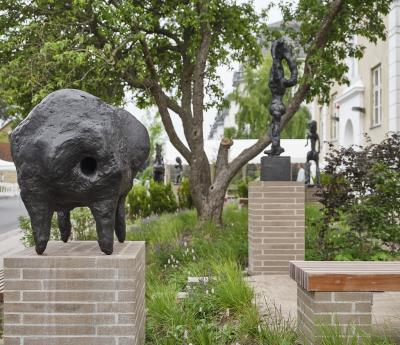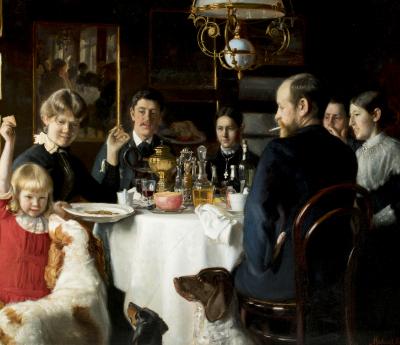INANO is a cross-disciplinary centre for nanotechnology that opened in 2002 at Aarhus University with the purpose of facilitating and coordinating contacts among researchers within the involved disciplines. The centre, whose full name is Interdisciplinary Nanoscience Center at University of Aarhus, has three primary missions: education, research and contacts to industry.
In the auditorium lobby, Jes Fomsgaard has hung a long, horizontal image, while the stairwell that connects the auditorium with the ground floor of the centre, features two, vertically oriented pictures.
Jes Fomsgaard (b. 1948) is known for his distinctive visual universe, which from varying perspectives draws the beholder’s gaze into shimmering architectural spaces. This decorative project revolves around the same technique.
‘I had the idea for the big, oblong picture when I opened the door to the auditorium and felt how I was being pulled towards the blackboard, which was covered in figures that were completely incomprehensible to me. That is why I constructed this sensation where the image pulls the beholder into the room, in an attempt to represent a view of a huge, deep world. What we see in the image is a landscape of technological components and then these blue organisms, like amoebas, living beings in an otherwise silent landscape.’
The vertigo effect that characterizes ‘Scientific landscape’ draws on experiences with the use of the central perspective in Renaissance art, Jes Fomsgaard explains.
‘We know this technique, for example from Leonardo da Vinci, and it was exciting for me to be able to rediscover this technique, which pulls the beholder into the motif. Today, many artists rely on photography as their tool, but this traditional technique has a potential that seems to have fallen into neglect somewhere along the way.’
The oblong picture is flanked by two black tablets that aim to bring a sense of calm and balance to the room. The black tablets also contain references to the ‘blackboard’ as a medium for thoughts, ideas and communication, says Jes Fomsgaard.
For the stairwell, Fomsgaard created the two pieces ‘Observatory’ and ‘Navigation’.
‘The stairwell is a space one barely notices as one comes down the stairs and moves towards the auditorium. Visitors only really see the space when they leave, heading up the stairs. My challenge was to tie the space together; but how to do that with this distinctive staircase in the centre? I decided to create a picture with a floor-to-ceiling “observatory”, which engages with the column-like shape of the staircase due to its vertical orientation. At the other side of the room, to provide a spatial balance, I hung a smaller but very impactful picture with an intense colour. I’m not the kind of painter who paints wet-on-wet. I rely on the basic phenomena: black and grey, a graphic appearance. But the bright red that I used here has an appropriate effect in this particular space – and in addition, it corresponds with the red fire safety box in the lobby.’
Both pictures in the stairwell represent an explorative mindset, says Jes Fomsgaard.
‘There’s an observatory that observes something, maybe sound waves, cf. the large sirens on the side. The smaller pictures chart something; there are disappearing lines and guiding routes. Think of aeroplanes in the sky, for example – their routes may look random, but they’re guided by a system we can’t see. In this sense, the air space is thoroughly regulated by invisible threads. And it’s these threads and lines and structures that the pictures reveal.’
